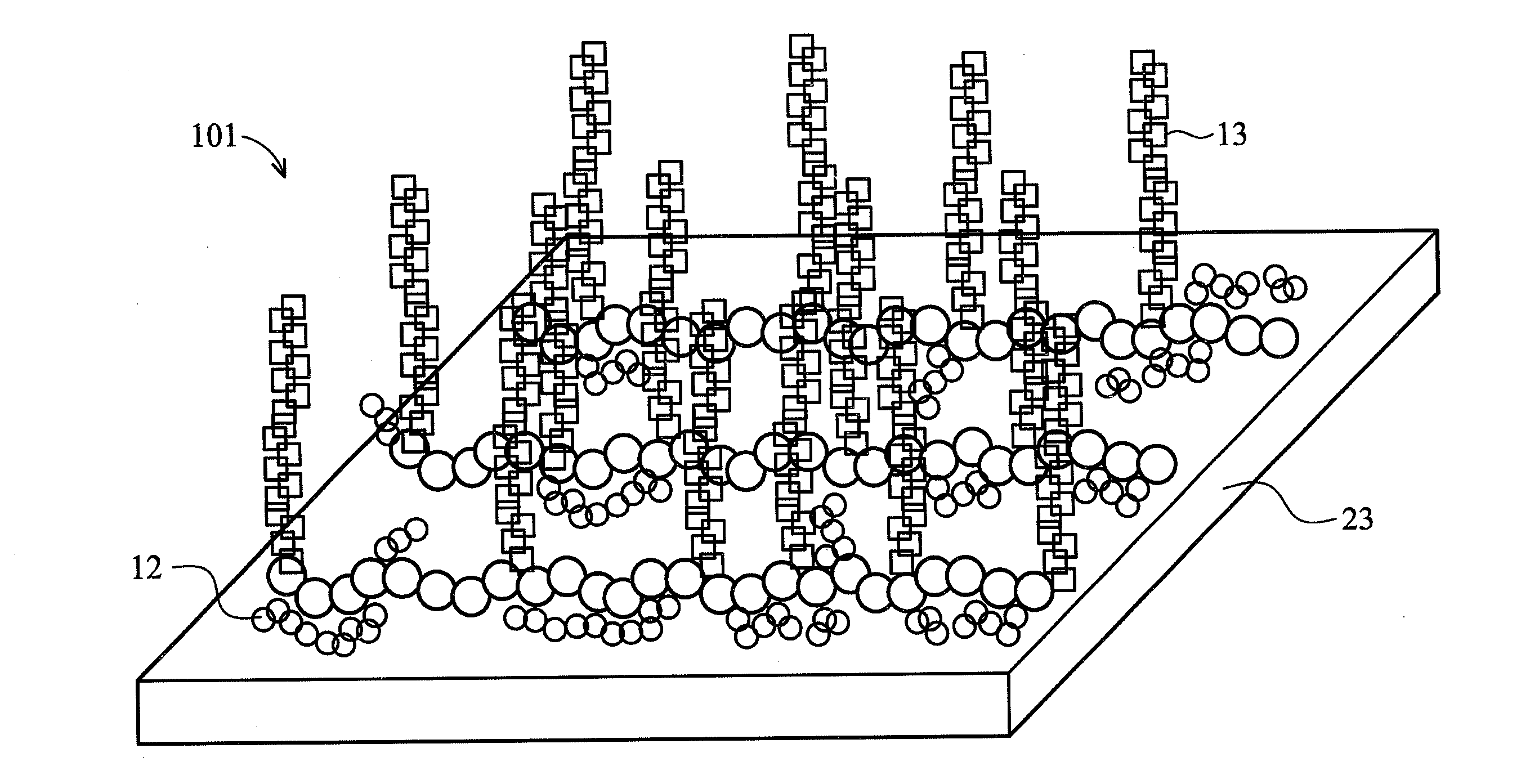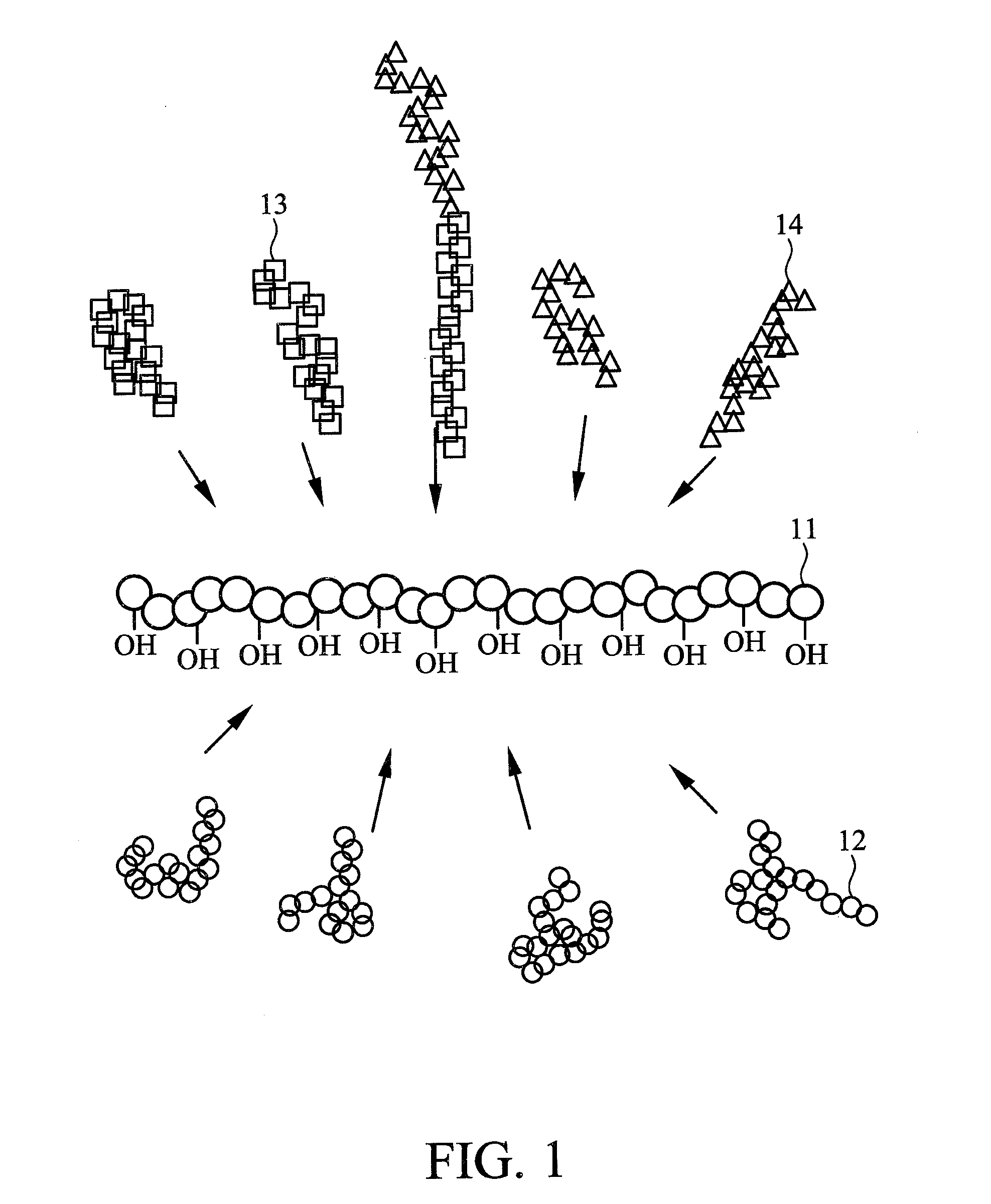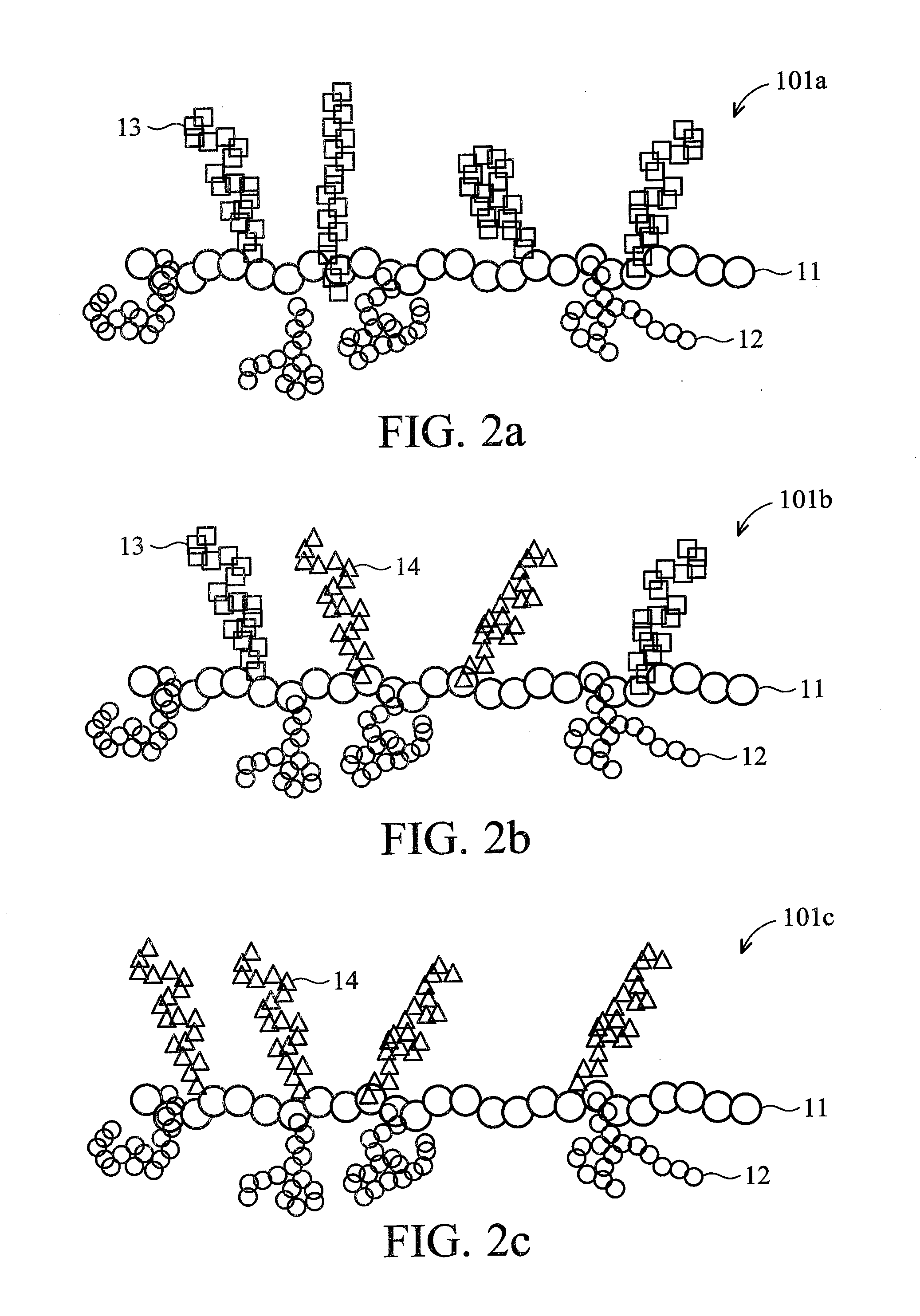Brush polymer and medical use thereof
a technology of brush polymer and polymer, applied in the field of functional polymer, can solve the problems of infection and blockage, and the inability to achieve uniform hydrophilic interface and optimized hydrophilic effect by such a method
- Summary
- Abstract
- Description
- Claims
- Application Information
AI Technical Summary
Benefits of technology
Problems solved by technology
Method used
Image
Examples
example 1
Hydrophobic Molecular Branch Prepolymer (A) (mPU(BDO)-NCO)
[0037]The hydrophobic molecular branch prepolymer (A) was prepared as follows: 1.53 g of 1,4-butanediol (1,4-BDO) was placed in a round-bottom flask. 7.65 ml of an N,N-dimethylacetamide (DMAc) solvent was added thereto and slowly heated to a temperature of 60° C. followed by thorough mixing. Then 8.42 g of diphenylmethane-4,4′-diisocyanate (MDI) was dissolved in 42.35 ml of N,N-dimethylacetamide (DMAc) and the solution was dripped slowly into the flask under nitrogen at a temperature of 50° C. for 3 hours. Thereafter, a sample of the reaction mixture was subjected to molecular weight analysis. The weight-average molecular weight measured by gel permeation chromatography (GPC) was about 2,243 dalton. Then, 0.12 ml of methanol diluted with 0.6 ml of DNAc was dripped slowly into the flask to form a hydrophobic prepolymer with single side activity.
example 2
Hydrophobic Molecular Branch Prepolymer (B) (mC8PU8,000-NCO)
[0038]The hydrophobic molecular branch prepolymer (B) was prepared as follows: 19.5 g of PolyTetramethylene-ether-Glycol (PTMEG1000) and 36 ml of N,N-dimethylacetamide (DMAc) were placed in a 150 ml two-neck flask. 2.325 g of diphenylmethane-4,4′-diisocyanate (MDI) was added into 4 ml of DMAc using an isobaric funnel. The mixture was uniformly mixed and heated to a temperature of 65° C. for reaction for 2 hours to obtain the prepolymer. The prepolymer was cooled to room temperature and C8-NCO and a catalyst were added into the prepolymer, uniformly mixed and heated followed by heating to a temperature of 65° C. for reaction for 2 hours to obtain a mC8-prepolymer.
[0039]Then, 2.325 g of MDI in 4 ml of DMAc was added slowly into the mC8-prepolymer, mixed uniformly and heated to a temperature of 60° C. for reaction for 3 hours to obtain the mC8PU hydrophobic molecular branch prepolymer (B). The weight-average molecular weight o...
example 3
Hydrophobic Molecular Branch Prepolymer (C) (mPPO2,500-NCO)
[0040]2.9 g of modified polyphenylene oxide (mPPO, weight-average molecular weight of 2,500) was dissolved in 4 ml of N,N-dimethylacetamide (DMAc), and then 0.275 g of diphenylmethane-4,4′-diisocyanate (MDI) and 2 ml of DMAc were added into a 25 ml two-neck flask and dissolved. The modified polyphenylene oxide (mPPO, weight-average molecular weight of 2,500) was added slowly into the MDI solution, mixed uniformly, and the mixture was heated to a temperature of 60° C. for reaction for 2 hours, to obtain mPPO2500-NCO.
PUM
| Property | Measurement | Unit |
|---|---|---|
| weight-average molecular weight | aaaaa | aaaaa |
| weight-average molecular weight | aaaaa | aaaaa |
| temperature | aaaaa | aaaaa |
Abstract
Description
Claims
Application Information
 Login to View More
Login to View More - R&D
- Intellectual Property
- Life Sciences
- Materials
- Tech Scout
- Unparalleled Data Quality
- Higher Quality Content
- 60% Fewer Hallucinations
Browse by: Latest US Patents, China's latest patents, Technical Efficacy Thesaurus, Application Domain, Technology Topic, Popular Technical Reports.
© 2025 PatSnap. All rights reserved.Legal|Privacy policy|Modern Slavery Act Transparency Statement|Sitemap|About US| Contact US: help@patsnap.com



